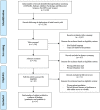Barriers and facilitators to the use of e-health by older adults: a scoping review
- PMID: 34399716
- PMCID: PMC8369710
- DOI: 10.1186/s12889-021-11623-w
Barriers and facilitators to the use of e-health by older adults: a scoping review
Abstract
Background: Limited attention has been paid to how and why older adults choose to engage with technology-facilitated health care (e-health), and the factors that impact on this. This scoping review sought to address this gap.
Methods: Databases were searched for papers reporting on the use of e-health services by older adults, defined as being aged 60 years or older, with specific reference to barriers and facilitators to e-health use.
Result: 14 papers were included and synthesised into five thematic categories and related subthemes. Results are discussed with reference to the Unified Theory of Acceptance and Use of Technology2. The most prevalent barriers to e-health engagement were a lack of self-efficacy, knowledge, support, functionality, and information provision about the benefits of e-health for older adults. Key facilitators were active engagement of the target end users in the design and delivery of e-health programs, support for overcoming concerns privacy and enhancing self-efficacy in the use of technology, and integration of e-health programs across health services to accommodate the multi-morbidity with which older adults typically present.
Conclusion: E-health offers a potential solution to overcome the barriers faced by older adults to access timely, effective, and acceptable health care for physical and mental health. However, unless the barriers and facilitators identified in this review are addressed, this potential will not be realised.
Keywords: Acceptance; E-mental health; Engagement; Mobile health; Multimorbidity.
© 2021. The Author(s).
Conflict of interest statement
We have no conflict of interest to declare.
References
-
- Nations U. World population ageing 2019 highlights; United Nations, Department of Economic and Social Affairs. New York: Population Division; 2019.
-
- Global Health and Ageing. 2011, World Health Organization (WHO).
-
- Hirst SP, Lane A, Stares R. Health promotion with older adults experiencing mental health challenges: a literature review of strength-based approaches. Clin Gerontol. 2013;36(4):329–355. doi: 10.1080/07317115.2013.788118. - DOI
Publication types
MeSH terms
LinkOut - more resources
Full Text Sources
Medical
Miscellaneous


